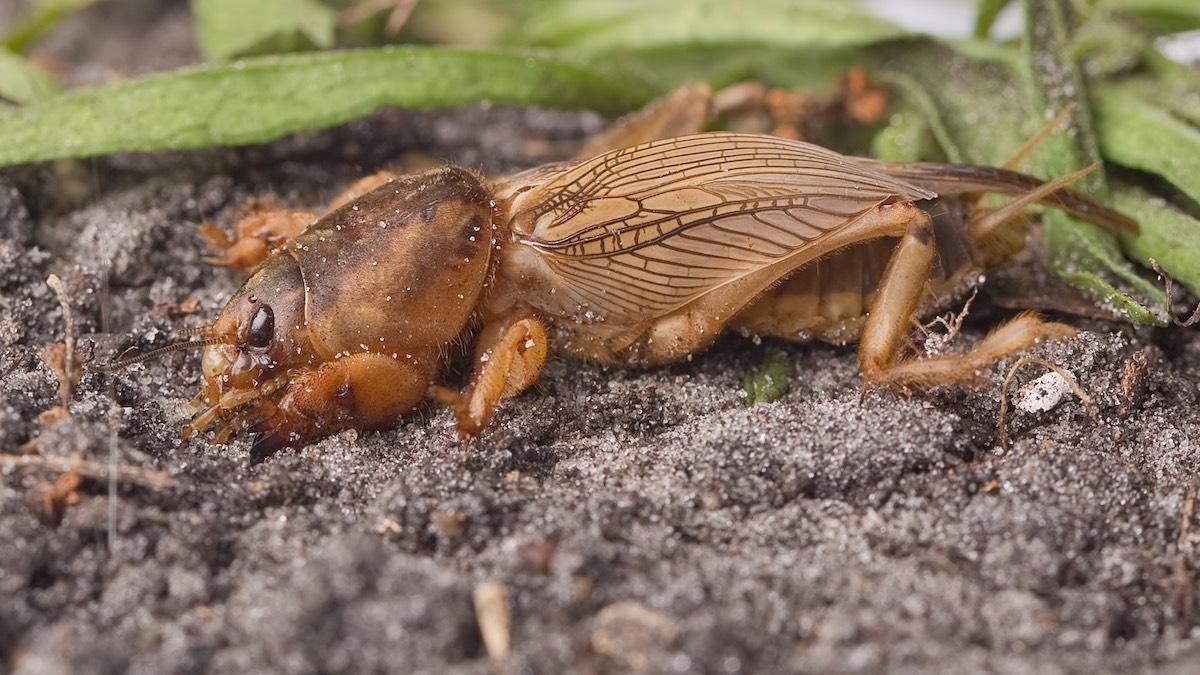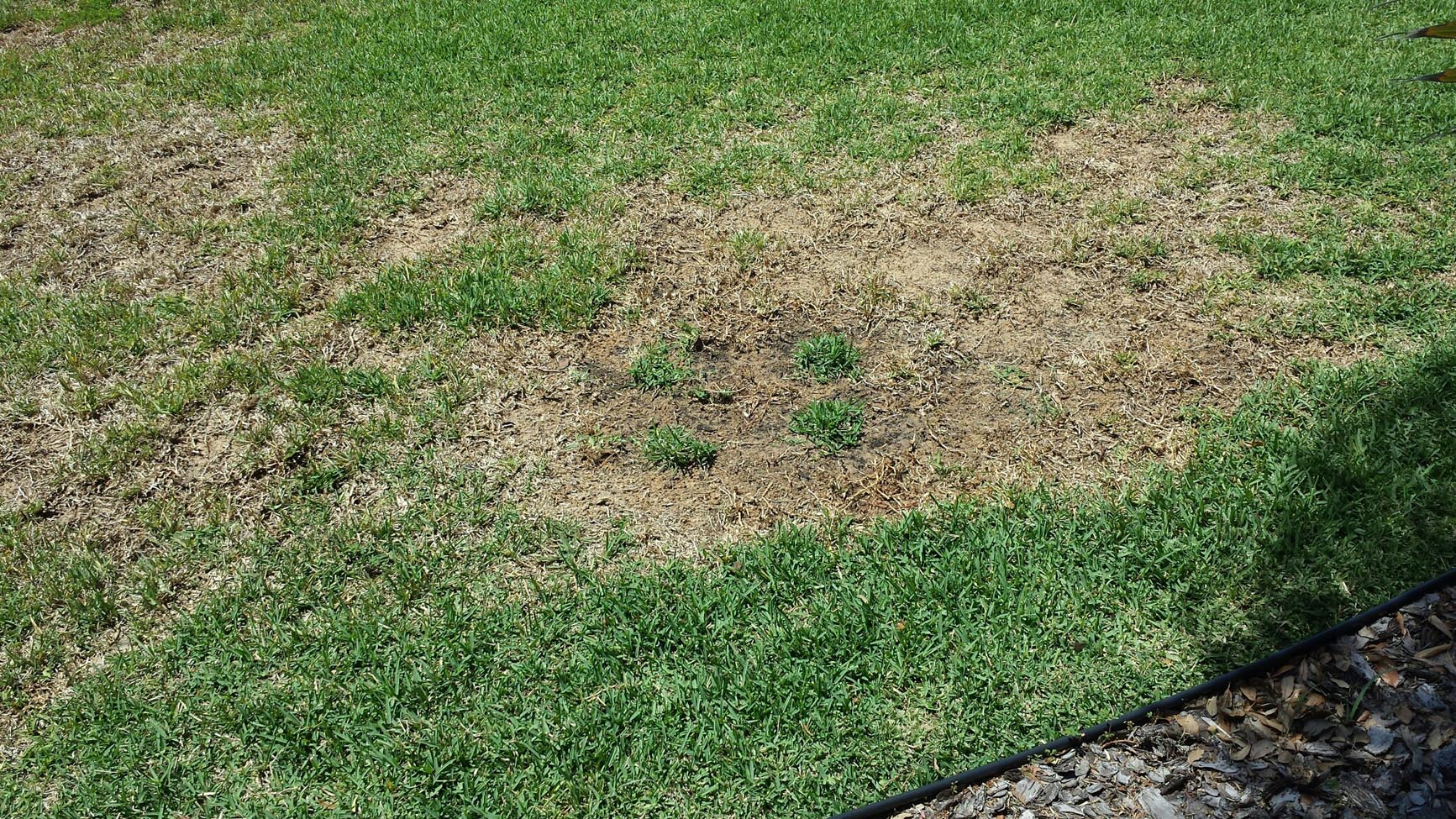Obviously, a mole cricket is not a result of interspecies reproduction. It is kind of an insect species that comes from the Gryllotalpidae family which is related to grasshoppers, crickets, and locusts.
Indeed, there are three main species of this insect. They are tawny, short-winged, and southern mole cricket. All of them are nocturnal. The season of fall is when these bugs being most active.
So, what is wrong with mole crickets? They can make great damage to a lawn.
These insects will burrow into the ground, transport tunnels, create mounds of dirt, and eventually killing the turfgrass. Let us learn more about them.
What Is A Mole Cricket?

A mole cricket is like the insect’s version of platypus. This omnivorous bug feed on plant material and animal. It is a common turfgrass pest that is native to the southeastern US.
This type of cricket will harm the lawns by feeding mainly on roots and shoots. It is done by tunneling inside the soil.
The damage made by the insect can be seen first in the early spring season. That is the time when mole crickets become so active.
Then, the size of mole cricket would be about 2.54 cm long. Its color can be dark brown to tan.
The unique front claws of each insect can be varied in size. They are used for digging the soil and create tunnels beneath the surface.
Habitat and Behaviour
For lawns, mole crickets are serious pests to get rid of as soon as possible. Indeed, these bugs are common throughout south Florida.
When the mole cricket becomes mature, they can fly. The insects will get attracted to outdoor lights.
Likewise, this nocturnal creature spends most of its time in the dark which is at night and beneath the soil. The underground tunnel system they made is like their home.
You can easily find mole crickets in agricultural fields, rice paddies, golf courses, and lawns.
Lifecycle
To deal with mole cricket effectively, it is necessary to understand the pest’s lifecycle. Both tawny and southern crickets have similar stages of life.
Luckily, in some regions, they only have one generation in a year.
The crickets also can have more than two generations per year. It is according to the location.
Here are things you need to know, mole crickets have 3 life stages, they are, egg, nymph, and adult stage.
After they through the egg stage, mole crickets can overwinter which is from October to March.
During the overwintering phase, they will be inactive. When the winter season is in warm condition, mole crickets can be active during that time.
You may find mounds of dirt and small tunnels at that time.
After the winter, the immature ones will become adults in the spring. In this season, they will be flying to begin the mating process.
After that, the adult females will lay eggs in the specific areas. They might come back to the same spot after a year.
Therefore, mole crickets live in the same areas every time. After the egg hatch, there will be the nymphs which are about ¼-inch long.
Although the nymphs are very tiny, you will also see some damages.
The adult stage will occur from August to October. During this time, the wall causes significant damage to the grass.
So, mole crickets will be active during warm temperatures and hidden during the cold season.
Is A Mole Cricket Dangerous?

It is a question that many people who are not familiar with these insects will ask? A mole cricket can be dangerous but it is not damaging for humans.
It can technically bite you if you provoke it. So, they do not naturally bite people to feed.
Even though you get bitten by mole crickets, there will be no symptoms or any reaction at all. You will be okay because the bites are so harmless.
However, it is a different situation for plants, especially turfgrass. This insect is dangerous and damaging for the lawns.
Mole Cricket Damage

So, what is the damage that mole crickets can make? Well, these insects can cause hassle and damage to our yards.
These pests can damage the turfgrass because of the scarred, elevated burrows on the soil’s surface. It could lead to patches of dying grass on your lawn.
That is what makes the yard less attractive.
Moreover, the root system of grasses is their food. Then, mole crickets also create small tunnels up to 30-inches down below.
Those damages can cause more damages because they attract other pests to dig on the existing tunnels. So, it is better to get rid of the mole crickets as soon as possible.
Mole Cricket Treatment

If your neighborhood has a mole cricket problem, you may want to begin treatment for your lawn. It would make sure that the pests will not appear in your place.
Doing a little bit of maintenance to prevent them could help solve the problem. Try the following things.
Best Baits for Mole Crickets
Baiting the mole crickets cannot be a good option to deal with any significant population. However, it will be working well by intercepting foraging crickets that get into your lawn.
Protein-Based Granules
You can use the product called MAXFORCE GRANULES. It is an affordable solution to get rid of foraging mole crickets. Apply 2-month treatment at the rate of 1 oz for every 1800 square feet.
For them, it smells like their food which contains protein. Eventually, they will die in about 2 or 3 days after feeding.
Just sprinkle it on the yard and make sure you get all property all the areas they might target.
This product will work at its best when the condition is wet. The perfect timing would be right after a rain or watering process.
Spraying Solution
If the lawn is already having established populations of these insects, then chemical treatments have to be involved in this scenario.
We use it to knock them out. First of all, you have to make sure that the treatment begins immediately after knowing about the problem.
Then, do not think about using only one application to knock them out. In many cases, you should use at least two products.
The best one would be treating them once a month for 3 months. As we know, killing mole crickets is quite hard. It is important to find strong actives to deal with it.
Many homeowners recommend the product called 97% ORTHENE. It is highly effective to deal with many garden pests including mole crickets.
You need to mix 1 oz of the actives with one to three gallons of water.
It is enough amount for 1,000 square feet. To treat about 16,000 square feet, a 1 lb bag would be adequate.
Do not forget to use a lot of water because you need to drench the nest and burrows to send the chemicals to the right spot.
In addition, pour some SPREADER STICKER SURFACTANT into the mix. It will help the moisture to get deep penetration.
Control
The way you control the development of the mole cricket population is very essential. It can help to remove them all eventually.
Instead of killing or any removal effort to the pests, which is hard to do, you can choose to control them.
Instead of the chemicals, there are some organic ways to deal with it.
The effectiveness of controlling the crickets depends on the season and their life stages. Treating them during the overwintering phase will not be effective.
The mole crickets will be active in the early spring season. So, the wintertime will not be an effective one for treatment. You can begin the treatment in the summer when they are still in form of larvae.
It is very hard to control the mole crickets when they are all adults. Therefore, controlling them before that phase is better.
You can apply some parasitic nematodes to attract the mature insects before they can lay their eggs.
Soapy water allows you to know the presence of mole crickets’ young larvae. It can flush them out. Apply 2 tablespoons of dishwashing soap and 3.8 liters of liquid.
Pour the mixture over one to two square foot areas. Do it in the late evening or even in the morning.
After that, wait for a while. You will see the mole crickets get onto the surface. If you find about 2 or more, mark the area for treatment application in the summer.
After the application of the soapy solution, do not forget to irrigate the area well.
How To Get Rid Of Them

To get rid of mole crickets, you can apply either insecticide or homemade pesticide. Pay attention to the differences below.
Insecticide

Here are some treatments you can do using insecticides to deal with mole crickets.
Bifen LP Granules

According to the label, this product treats various kinds of lawn insects that include mole crickets. A residual effect of Bifen LP Granules can last for a long time, up to 12 weeks.
You can spread it all over the yard.
The best time for application is between late spring and the beginning of the fall season. All eggs typically hatch at that time.
At first, you have to determine the amount of Bifen LP you need for the treatment. After measuring the size of the target area, you will get the result as square footage.
Typically, get 2.3 pounds of Bifen LP for 1,000 square feet of the yard. By using the spreader, you can broadcast the granules uniformly to the target areas.
After the application of the Bifen LP, water it using Dominion 2L.
Dominion 2L

The grass will absorb this systemic insecticide. So, when the mole crickets eat on the blades, the Dominion 2L will get into their body and die.
This substance helps activates the Bifen LP. Besides, it also controls other common lawn insects for a month.
You have to mix a 0.6 fl. Oz to kill these insects with 3.8 liters of liquid. It is a mixture of 1,000 square feet.
If the lawn is large, it is recommended to use the hose-end sprayer that has a 20-gallon capacity.
Using 2 gallons of water per 1,000 square is also recommended. Ensure that the solutions are enough to reach the roots.
Spray the Dominion 2L mixture over the target area. It is better to apply the insecticide when the wind is calm.
Pay attention to the timing because it would be a problem when it is too early or too late. For your consideration, this substance is dangerous to bees.
Make sure there is not be around when applying it.
Homemade Pesticide

There are a few products mentioned above. Since eliminating the adult mole crickets are hard, chemicals can be a pretty good solution.
You can also use a homemade pesticide. Here are some DIY remedies to combat the mole crickets.
- Sticky Traps
Make your traps for the insect from sticky paper. Just place them nearby the target area where you find the crickets often. It works well to capture pests.
- Yellow Plastic
Float squares of yellow plastic in a hanging bucket of water, it would attract the mole crickets to investigate and fall into the water and drown.
- Larra Wasp
Plant buttonweed and partridge peas. They would attract Larra wasp that naturally kills and eat mole crickets.
- Molasses
Get a small container and fill it with one part molasses to nine parts of water. Use canola oil to cover the surface of the filling.
Set it up into the soil to rests it at the soil level. That would attract the mole crickets to visit and fall into the mixture and drown.
Conclusion
Dealing with a mole cricket is a hard thing to do especially for those who do not know about its lifecycle, treatment, and control. For you, getting rid of these pests is a piece of cake.